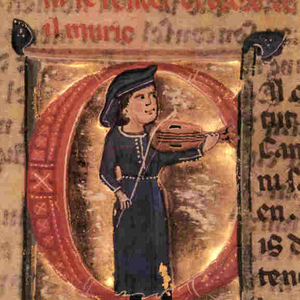
| Trackimage | Playbut | Trackname | Playbut | Trackname |
|---|---|---|---|---|
| 83583432 | Play | Ai tal domna | 00:00 Tools | |
| 83583433 | Play | Tant m'abelis | 00:00 Tools | |
| 83583434 | Play | Tan m'abelis jois et amors e chans: Tant m'abelis | 00:00 Tools | |
| 83583435 | Play | Totz temoros | 00:00 Tools | |
| 83583436 | Play | Ab la fresca clardat | 00:00 Tools | |
| 83583437 | Play | De la gencor | 00:00 Tools | |
| 83583438 | Play | Totz temoros e doptans | 00:00 Tools | |
| 83583442 | Play | Tant m'abelis jois et amors et chants | 00:00 Tools | |
| 83583440 | Play | Aital dona | 00:00 Tools | |
| 83583439 | Play | Bona domna, cui rics pretz fai valer | 00:00 Tools | |
| 83583441 | Play | Tan m'abelis jois et amors e chans | 00:00 Tools | |
| 83583443 | Play | Tant m'abelis joys et amors et chants | 00:00 Tools | |
| 83583444 | Play | Noans | 00:00 Tools | |
| 83583450 | Play | O pater | 00:00 Tools | |
| 83583446 | Play | Ai tal dona cum ieu sai | 00:00 Tools | |
| 83583445 | Play | Domna, si totz temps vivia | 00:00 Tools | |
| 83583448 | Play | De la gencor qu'om vey'al mieu semblan | 00:00 Tools | |
| 83583449 | Play | Bona domna cuy ricx pretz fai valer | 00:00 Tools | |
| 83583451 | Play | Dona la gencer qu'om veya | 00:00 Tools | |
| 88593065 | Play | Dona si totz temps vivia | 00:00 Tools | |
| 83583447 | Play | Domna, la gensor qu'om veja | 00:00 Tools | |
| 90269362 | Play | Tant m abelis | 00:00 Tools |

-
- 4,771
- plays
-
- 1,473
- listners
-
- 4771
- top track count
Berenguier de Palazol, Palol, or Palou (fl. 1160–1209) was a Catalan troubadour from Paillol in the County of Roussillon. Of his total output twelve cansos survive, and a relatively high proportion—eight—with melodies. Only some sketchy details of Berenguier's life can be gleaned from surviving records. According to his vida he was a poor knight, but well-trained and skilled in arms. Other evidence suggests that his family was well-off. He appears in five documents of Roussillon between 1196 and 1209, all under the Latin name Berengarius de Palatiolo (or Palaciolo). The earliest dates of his career are determined by the fact that he was a vassal of Gausfred III of Roussillon, who died in 1164 and receives mention in several of Berenguier's works. It is quite possible that Berenguier was one of the earliest troubadours, and the poems that mention Jaufres (Gausfred) may date as early as 1150. Berenguier does not seem to have had much contact with his fellow troubadours. He may have met Pons d'Ortaffa late in life, and the latter may address him in one his songs as Senher En Berenguier. All of Berenguier's surviving works deal with the theme of courtly love. One of his cansos was a model for a sirventes by his contemporary Raimbaut de Vaqueiras, who may have set it to the same tune, Berenguier's most "florid". The chief object of the love of his songs is Ermessen d'Avinyo, wife of Arnaut d'Avinyo. According to Berenguier's vida, Arnaut was son of Maria de Peiralada, but this is probably a confusion with Maria domina de Petralata, the mother of Soremonda, the lover of Guillem de Cabestany. Berenguier's well-preserved music is generally syllabic with a few melismatic phrase endings; conservative, generally staying within an octave; and motivically structured, having something in common with that of Bernart de Ventadorn. Berenguier's works cannot be chronologically ordered with any confidence, but they have been ordered in a scheme which seeks to present some "logical" development of a theme. The theme which runs through these works cannot be connected to events in Berenguier's life, nor can it be shown that the lady (dompna) of every song is the same person. Nonetheless, the developing of the theme corresponds to stages in the life of a lover. Read more on Last.fm. User-contributed text is available under the Creative Commons By-SA License; additional terms may apply.